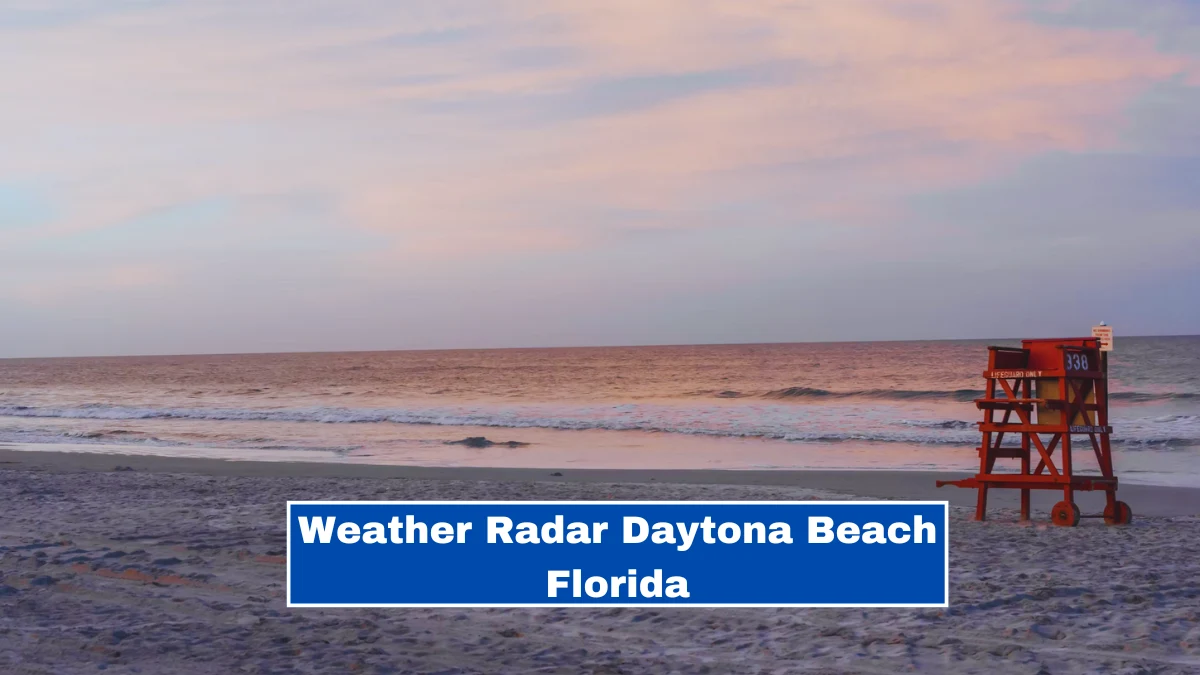Weather Radar Daytona Beach Florida: When visiting or residing in Daytona Beach, Florida, keeping an eye on the weather is essential, especially considering the region’s unpredictable climate. One of the best tools at your disposal is a weather radar. This guide will help you understand the importance of using a weather radar in Daytona Beach, how it works, and why it’s crucial for your safety and convenience.
What is a Weather Radar?
A weather radar is a vital tool that helps meteorologists and the general public track weather conditions in real time. It uses radio waves to detect precipitation, such as rain, snow, sleet, or hail. The radar sends out a pulse, and when it hits an object like raindrops or snowflakes, the pulse is reflected to the radar. This information is then processed to create a visual representation of the weather patterns in the area.
Why is Weather Radar Important in Daytona Beach, Florida?
Daytona Beach, known for its stunning coastline and world-famous motorsports events, also experiences its fair share of weather challenges. The region’s subtropical climate means that residents and visitors can encounter everything from sunny days to sudden thunderstorms and hurricanes. Here’s why staying updated with a weather radar is important:
- Hurricane Preparedness: Florida is prone to hurricanes, especially during the Atlantic hurricane season, which runs from June to November. A weather radar can provide early warnings, allowing you to make necessary preparations or evacuate if needed.
- Outdoor Activities: Daytona Beach is a haven for outdoor enthusiasts. Whether you’re planning a day at the beach, a round of golf, or attending a NASCAR race, a quick check of the weather radar can help you avoid getting caught in an unexpected downpour.
- Travel Plans: If you’re flying into or out of Daytona Beach International Airport, weather conditions can impact flight schedules. Checking the weather radar before you head to the airport can save you time and stress.
- Real-Time Updates: Unlike standard weather forecasts, which are updated every few hours, a weather radar provides real-time updates. This allows you to see exactly where a storm is and how fast it’s moving.
Read Also- Best Towns to Visit in Palm Beach
How to Use a Weather Radar in Daytona Beach
Using a weather radar is simple and can be accessed through various platforms:
- Local News Channels: Most local news stations in Daytona Beach offer weather radar as part of their weather updates. Watching the local news is a great way to stay informed about current conditions.
- Weather Apps: Several mobile apps, such as The Weather Channel, AccuWeather, and MyRadar, provide interactive radar maps. These apps allow you to zoom in on specific areas, including Daytona Beach, to monitor weather patterns.
- NOAA Radar: The National Oceanic and Atmospheric Administration (NOAA) provides detailed weather radar maps for the entire United States, including Florida. Their website is a reliable source for accurate and up-to-date weather information.
Understanding Radar Imagery
When you view a weather radar, you’ll typically see different colors representing various intensities of precipitation:
- Light Green: Indicates light rain or drizzle.
- Dark Green: Signifies moderate rain.
- Yellow and Orange: Represent heavier rain or thunderstorms.
- Red and Purple: Indicates severe storms with heavy rain, hail, or potential tornadoes.
By familiarizing yourself with these colors, you can better understand the severity of the weather and plan accordingly.
Weather Radar and Severe Weather Alerts
In addition to monitoring radar, it’s essential to be aware of any severe weather alerts issued for Daytona Beach. These alerts, often in the form of warnings or watches, provide critical information about potential weather threats, such as tornadoes, flash floods, or hurricanes.
Weather radars often work in conjunction with these alerts, giving you a comprehensive view of the situation. For example, if a tornado warning is issued, you can check the radar to see the storm’s location and its path.
Tips for Staying Safe During Severe Weather in Daytona Beach
- Stay Informed: Always have access to a weather radar or app that provides real-time updates. Set up notifications for severe weather alerts to ensure you’re aware of any potential dangers.
- Create an Emergency Plan: If you’re a resident, make sure your family knows what to do in the event of severe weather. Visitors should familiarize themselves with local emergency procedures and evacuation routes.
- Prepare an Emergency Kit: Keep a kit with essential items like water, non-perishable food, a flashlight, and first-aid supplies. This is especially important during hurricane season.
- Seek Shelter: If a severe weather warning is issued, take shelter immediately. For hurricanes, evacuate if instructed by local authorities.
Conclusion
The weather radar in Daytona Beach, Florida, is more than just a tool; it’s your first line of defense against the unpredictable weather patterns of the region. By understanding how to use it and staying vigilant, you can enjoy all that Daytona Beach has to offer while keeping yourself and your loved ones safe. Whether you’re a local or just visiting, make it a habit to check the weather radar regularly—because in Florida, the weather can change in the blink of an eye.
Read Also- Best Things to Do in West Palm Beach
Williamson is the passionate author and writer behind floridabeachusa.com, a website dedicated to exploring the beautiful beaches, travel destinations, and the latest News in Florida and across the USA.

